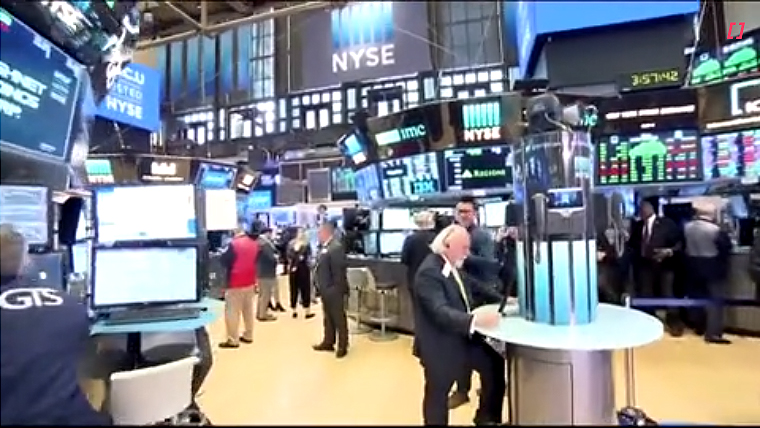
Stronger than expected US retail sales data saw the market pare the scope for easier Fed policy and drove higher US Treasury yields. The ECB cut rates and the market added to bets that the ECB would step up the pace of easing going forward against the backdrop of lower inflation and downside risks to growth. Currency moves have been modest but JPY and EUR underperformed. The AUD was supported after a strong labour market report and the NZD has range-traded around 0.6060.
US retail sales were stronger than expected across the board and with upward revisions, with the headline index up 0.4% m/m and the core figure and control group measures, the latter feeding into GDP, even stronger, up 0.7% m/m. Control-group sales rose at an annualised pace of 6.4% in Q3, suggesting a strong pick-up in spending, and contributing to the Atlanta Fed’s GDPnow estimate rising to 3.4%. Against a backdrop of weaker income growth, that pace of spending is unsustainable, but it still raised a question mark over the pace of Fed easing ahead.
Second-tier data were mixed, with initial jobless claims unexpectedly falling 19k to 241k last week, although the data were distorted by the impact of two hurricanes and the Boeing strike. For the same reason, industrial production fell 0.3% m/m in September, alongside downward revisions. The Philly Fed business outlook and NHB housing market index were both slightly stronger than expected.
The market pared the scope of Fed easing, although not significantly so, with 23bps of cuts priced for the next meeting and cumulatively 43bps priced through to the December meeting. US Treasury yields jumped higher, and the yield curve steepened, with the 2-year rate up 4bps to 3.98% and the 10-year rate up 8bps to 4.10%.
For US equities, the stronger growth backdrop more than compensated for higher rates, with the market advancing to a fresh intraday record high and the S&P500 index is currently up 0.4%. European equities were also stronger, with the Euro Stoxx 600 index closing up 0.8% and a 0.8% gain in Germany’s DAX index took it to a fresh record high.
The ECB cut its policy rates for a third time this cycle, as widely telegraphed prior to the meeting, with a 25bps cut in the deposit rate to 3.25%. The Statement noted inflation is expected to rise in the coming months before declining to target in the course of next year, hinting of an earlier meeting of the target than previously thought. ECB President Lagarde noted that the economy was somewhat weaker than expected and growth risks remain tilted to the downside, adding that any hardening of trade barriers would add to the downside risk.
While she repeated the line that the ECB would take a meeting-by-meeting approach regarding the pace of easing, Bloomberg reported “ECB officials reckon another interest rate cut in December is highly likely, with inflation to settle at 2% faster than envisaged…a move at the final meeting of 2024 would also help protect the stuttering economy and ensure a soft landing”.
Against a backdrop of higher US rates, European short end rates fell, while longer term rates rose by less, contributing to steeper curves, with Germany’s 2-year rate down 2bps and 10-year rate up 2bps. The market moved to price in an increasing chance of the ECB stepping up with a 50bps cut in December.
Currency movements overnight have been modest, but the EUR underperformed, falling to a fresh 2½ month low just above 1.0810 and currently 1.0825. The higher global rate backdrop has seen JPY as the worst of the majors, with USD/JPY breaking up through 150.
The AUD has been the strongest of the majors over the past 24 hours, sustaining the move seen in the wake of the stronger than expected Australian labour market report. A strong 64k lift in employment and higher participation kept the unemployment rate steady at a downwardly revised 4.1%. This saw the market pare the extent of easing priced into the curve, lifting interest rates across the board and supporting the AUD, which currently sits around 0.67. Higher Treasury yields have seen the rates sell-off extend, with Australia’s 10-year rate up 7bps since the NZ close.
Despite the stronger US data, the NZD has managed to hold its ground and has been oscillating around 0.6060 over the past 24 hours. NZD/AUD is modestly weaker at 0.9050 and is higher on most crosses, back above 91 against JPY and 0.56 against EUR.
Yesterday, China’s press briefing led by the housing ministry provided further piecemeal policy initiatives to help support the property market, but underwhelming the market which is looking for a massive fiscal injection. Chinese equities fell over 1%, and iron ore prices fell over 5%, but there was little impact on currency markets, with only a slightly weaker yuan, while pressure on the AUD and NZD was fleeting.
The domestic rates market performed well in the face of higher Australian yields, with the 2-year swap rate closing down 2bps to 3.59% and no net change for the 10-year swap rate. Higher rates leading into the government bond tender resulted in some good bidding and yields fell heading into the close. The net result was little change in rates cross the curve, the 10-year rate closing unchanged at 4.40%.
On the economic calendar today, Japan CPI and China activity data, including Q3 GDP, will be released.




We welcome your comments below. If you are not already registered, please register to comment.
Remember we welcome robust, respectful and insightful debate. We don't welcome abusive or defamatory comments and will de-register those repeatedly making such comments. Our current comment policy is here.